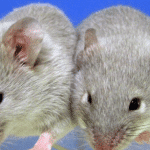Cravings can feel like an unstoppable force. Whether you’re recovering from substance use, emotional eating, or other addictive behaviors, the urge to give in can be overwhelming. But here’s some good news: mindfulness techniques, backed by science, can help you regain control over those cravings and reduce their power over time.
Let’s explore how mindfulness can help you take back your freedom.
The Science Behind Mindfulness and Cravings
Cravings don’t appear out of nowhere. They stem from your brain’s reward system, which is fueled by dopamine—the feel-good chemical.
When you engage in addictive behaviors, dopamine levels surge, making your brain crave that same reward again. Mindfulness can help break this cycle by teaching you to observe these urges without reacting to them, weakening the automatic link between the craving and your response.
Research backs this up. A study published in Drug and Alcohol Dependence showed that mindfulness-based interventions reduced substance use significantly. Another study in Appetite found that mindfulness techniques helped reduce binge eating by teaching individuals how to tolerate discomfort.
Mindfulness Techniques for Cravings
1. Surf the Urge
Picture your craving as a wave. It rises, peaks, and eventually fades. Instead of fighting the craving, observe it as it moves through you. Acknowledge the feeling (“I notice I’m craving a snack”), take some deep breaths, and remind yourself that it will pass. This practice, called “urge surfing,” helps increase emotional resilience and can reduce impulsive reactions.
2. Body Scan Meditation
Cravings often have a physical component—maybe a tight chest, jittery hands, or restlessness. A body scan meditation can help you shift focus from the craving to your physical sensations. Starting at your toes, slowly work your attention upward, relaxing each area. This practice only takes about 10 minutes but can help you feel more grounded and in control.
3. Five Senses Grounding Exercise
When cravings hit, engage your senses to bring yourself back to the present moment. Ask yourself:
- What are 5 things I can see?
- What are 4 things I can touch?
- What are 3 things I can hear?
- What are 2 things I can smell?
- What is 1 thing I can taste?
This technique doesn’t just distract you—it reduces the stress and anxiety that often come with cravings.
Building a Mindful Lifestyle
Mindfulness isn’t a quick fix—it’s a practice. To make mindfulness part of your life, try incorporating it into your daily routine through meditation, journaling, or even mindful walking. If you’re new to mindfulness, apps like Headspace can guide you. (And no, this isn’t a sponsored recommendation, just a helpful tip!)
For a deeper dive, you might consider programs like Mindfulness-Based Stress Reduction (MBSR), which offer structured, evidence-based approaches to mindfulness.
Your Path to Freedom
Cravings don’t define who you are—how you respond to them does. By using mindfulness techniques, you can transform your relationship with cravings and triggers, taking control of your health and well-being. So the next time you feel a craving coming on, remember to breathe, ride the wave, and stay grounded—you’ve got this!
Recommended – The Health Benefits of Trying Something New Every Month














